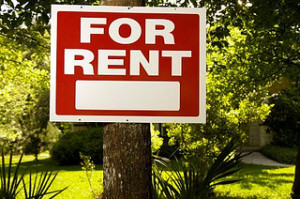“Almost no one is moving to San Francisco to save money.” We love our region, but the opening line in recent Associated Press article, carried by U.S. News & World Report, is a truth Bay Area residents feel in their tightening wallets. Research by real estate data firm Zillow found that city rents jumped 15% over the past year with the average home rent hitting $3,129 in March. This cost makes tenant protections, including rent control, even more important, especially for long-term city residents. Our San Francisco tenants’ attorney is glad to share the news that the Supreme Court of California has helped strengthen those protections.
The Facts: Landlord Nearly Doubles Tenant’s Rent
As the San Francisco Chronicle reported, last Wednesday the state’s highest court unanimously declined to review a First District Court of Appeal decision handed down in January. In doing so, the court allows the appellate decision favoring a San Francisco tenant to stand. Brian Govender has lived at 999 First Street, close to Alamo Square, since November 2003. At the time, Govender was only 13 and not named in the lease. His parents moved out in August 2012 and owner Mosser Companies moved to raise the monthly rent from $1,681.75 to $3,295.
The Ruling: Rent Control Protects “All Original Lawful Occupants,” Even Those Who Didn’t Sign Original Lease
 The case turned on an interpretation of a 1995 state law, the Costa-Hawkins Act (“the Act”), which allows landlords to reset rents to market rates when the “original occupant or occupants” leave. The Act limits local rent control provisions and attempts to balance the interests of tenants and landlords. Going before the San Francisco Rent Board, Mosser argued Govender did not qualify as an “original occupant” because he did not sign the initial lease and was not bound by it.
The case turned on an interpretation of a 1995 state law, the Costa-Hawkins Act (“the Act”), which allows landlords to reset rents to market rates when the “original occupant or occupants” leave. The Act limits local rent control provisions and attempts to balance the interests of tenants and landlords. Going before the San Francisco Rent Board, Mosser argued Govender did not qualify as an “original occupant” because he did not sign the initial lease and was not bound by it.
The Board, and subsequently the courts, disagreed. According to the appeals court, cities can maintain rent control for “all original lawful occupants” including occupants who did not sign the original lease. The court cited previous rulings maintaining rent control on behalf of a San Francisco man’s sister and a Berkeley man’s roommates. In those cases, the tenant(s) lived in the unit with the landlord’s knowledge and consent but, like Govender, did not sign the original lease.
Rent Control and Other Tenant Protections
As state law, the Act trumps local protections like those in the San Francisco Rent Ordinance (“the Ordinance”) (Important Note: Rent control is only one aspect of the Ordinance, see blog entry linked below). In the Govender decision, the court reads the Act narrowly, finding it only prohibits the strictest form of rent control which maintains a set maximum rental price until a unit becomes vacant. Pursuant to the Ordinance, a San Francisco landlord cannot raise a current occupant’s rent more than a specific percentage each year, a figure tied to the Consumer Price Index. For March 1, 2014 through February 28, 2015, the allowable increase was 1%; the amount is 1.9% for the period from March 1, 2015 through February 29, 2016.
Greg Brod is a landlord-tenant lawyer in San Francisco. Attorney Brod represents individual renters in a range of disputes including rent control and habitability matters. He also serves as a lawyer for tenant class actions in California. Call to learn more and schedule your no-cost consultation.
See Related Blog Posts:
Homeowners’ Lawyer on Individual and Class Action Claims for Construction Defects in California
A Quick Guide to Tenants’ Rights Under the San Francisco Rent Ordinance
(Image by Mark Moz)
 San Francisco Injury Lawyer Blog
San Francisco Injury Lawyer Blog

